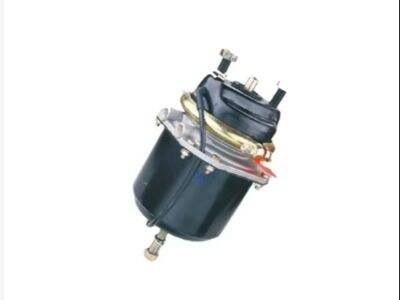Egyszer régen, a vonatok feltalálása előtt, ezeknek a hatalmas eszközöknek a megállítása óriási nehézségekbe ütközött. Szerintem azzal küszködtek, hogy megállítsák a vonatokat, de azért küzdöttek, hogy összetörjék a nehéz vasúti kocsikat, amelyeket a motorjukra húztak. Az egyik szilárd ötlet, ami felmerült, a levegő fékszelep. Most pedig nézzük meg, hogyan találták fel a légfékszelepeket, és hogyan fejlődtek, hogy biztonságosabbá és hatékonyabbá tegyék a vonatokat az évek során.
HVAC (Heating Ventilation Air Conditioning) vezérlők.
A légfékszelepek az 1800-as évek vége óta elég régóta léteznek. Egy George Westinghouse nevű feltaláló úgy döntött, hogy jobb módszert keres a nagyon nagy sebességgel haladó nehéz vonatok megállítására. Olyan módszert képzelt el, amely sűrített levegővel nyomja a fékpofákat a vonat kerekeihez. Ez lehetővé tette a vonat korábbinál gyorsabb és biztonságosabb megállítását. Ez az új fékrendszer lett a vonat legfontosabb alkatrésze, hogy mindenki számára biztonságosabb legyen, és ezt a részt légfékszelepnek hívták.
A korai légfékszelepek egyszerű szerkezetek voltak, és sárgaréznek nevezett fémből készültek. Tartalmaztak egy kart, amelyet a mozdonyvezető (más néven mérnök) meghúzhatott a fékezéshez. Ezt a kart egy hosszú rúd kötötte az egyes vonatkocsik szelepeihez. Amikor a mérnök meghúzta a kart, levegő távozott a vonat légtartályából, és a tömlőkön keresztül az egyes kocsik fékszelepeihez áramlott. Ez egy olyan rendszer volt, amely lehetővé tette a vonat számára, hogy szükség esetén biztonságosan megálljon az állomásokon és máshol."
Továbbfejlesztett légfékszelepek
Az évek alatt, légfék szelep fejlődtek és fejlődtek. A mérnökök keményen igyekeztek rávenni őket, hogy jobban működjenek, és hogy a vonatkezelők könnyebben használhassák őket. Az egyik lényeges fejlesztésen esett át az automatikus légfékszelep. Ez a speciális szeleptípus egyszerre fékezhetné az összes vasúti kocsit, ha a légnyomás hirtelen csökkenne. Ez egy kulcsfontosságú biztonsági charta volt, mert változást hozott a balesetek számának csökkentésében, valamint az utasok és a személyzet biztonságának biztosításában a vasúton.
Új fejlesztés a légfékszelepekhez
A légfékszelepek a mai napig folyamatosan javulnak. A mérnökök új anyagokat és gyártási technikákat fejlesztettek ki, amelyek eredményeként a szelepek kisebbek, könnyebbek és lényegesen erősebbek, mint valaha. Új anyagokat is bevezettek, amelyek javítják a szelepek funkcionalitását és tartósságát.
A gázkartól a fékekig mindent elektronikusan vezérelnek majd, ami radikálisan eltér a korábbiaktól. Például az elektronikus légfékszelepek a fékrendszerben lévő légnyomás speciális érzékelőivel ellenőrizhetők. Ezek az érzékelők lehetővé teszik a szelep dinamikus beállítását a nyomásszintekhez. Ez precízebb fékezést tesz lehetővé, javítja a teljesítményt és a modulációt az esőstől a havasig.
Ezenkívül a kompozit anyagok nagy részét képezik a légfékszelep-technológia változásának. A kompozit légfékszelepek anyagok és műanyagok és egyéb tartós anyagok kombinációjából készülnek. Az új anyagok könnyebbek, mint a régebbi fémszelepek, így a vonatok kevesebb üzemanyagot fogyasztanak és hatékonyabbak lesznek. Ez azt is jelenti, hogy a fékberendezések kevésbé kopnak, így tovább tartanak.
Autóipari technológia légfékszelepekben
Maga a légfékszelep a technológia miatt inkább alapvető változáson megy keresztül, és fejlődik a mögötte álló technológia, valamint a gyártási mód tekintetében. Régóta fejlett 3D nyomtatási technológiákat alkalmaznak a szelepek összetett alkatrészeinek előállítására, amelyeket korábban nehéz volt gyártani. Ez jobb kialakításokat eredményezett, amelyek javítják a szelepek munkáját, és egyszerűbbé teszik a gyártásukat.
A digitális vezérlések azt is megváltoztatják, ahogyan az emberek ezeket a szelepeket ellenőrzik és karbantartják. Az érzékelők meg tudják állapítani, ha egy szelep hibásan működik, és értesítést küldenek a karbantartó személyzetnek. Ez lehetővé teszi a csapatoknak, hogy felfogják a dolgokat, mielőtt azok nagy problémákba fordulnának. Ez a technológia lehetővé teszi a vonatkezelők számára, hogy folyamatosan figyeljék a légfékszelepeket, hogy biztosítsák, nincs meghibásodás vagy kopás.
Végül, légfék relé szelep elmondható, hogy eddig a járművek megállításának tartós módjaként fejlődött ki. Bonyolultabbá, megbízhatóbbá és mindenki számára biztonságosabbá fejlődtek. A legnagyobb változások a technológiai fejlődésen keresztül következtek be, és a technológia a jövőben is új változásokat fog előidézni. Célunk, hogy a VIT-nél a lehető legjobb légfékszelepeket fejlesszük ki ügyfeleink számára. Ennek a jelentős technológiának a kilátásai ígéretesek, és kíváncsian várjuk, hogyan teszi lehetővé a vonatok biztonságos és hatékony közlekedését az elkövetkező években!

 EN
EN
 AR
AR
 BG
BG
 CS
CS
 DA
DA
 NL
NL
 FI
FI
 FR
FR
 DE
DE
 EL
EL
 IT
IT
 JA
JA
 KO
KO
 NEM
NEM
 PT
PT
 RO
RO
 RU
RU
 ES
ES
 ID
ID
 SR
SR
 UK
UK
 VI
VI
 SQ
SQ
 HU
HU
 TH
TH
 TR
TR
 MS
MS
 GA
GA
 HY
HY
 AZ
AZ
 KA
KA
 BN
BN
 LO
LO
 LA
LA
 MN
MN
 MY
MY
 KK
KK
 UZ
UZ
